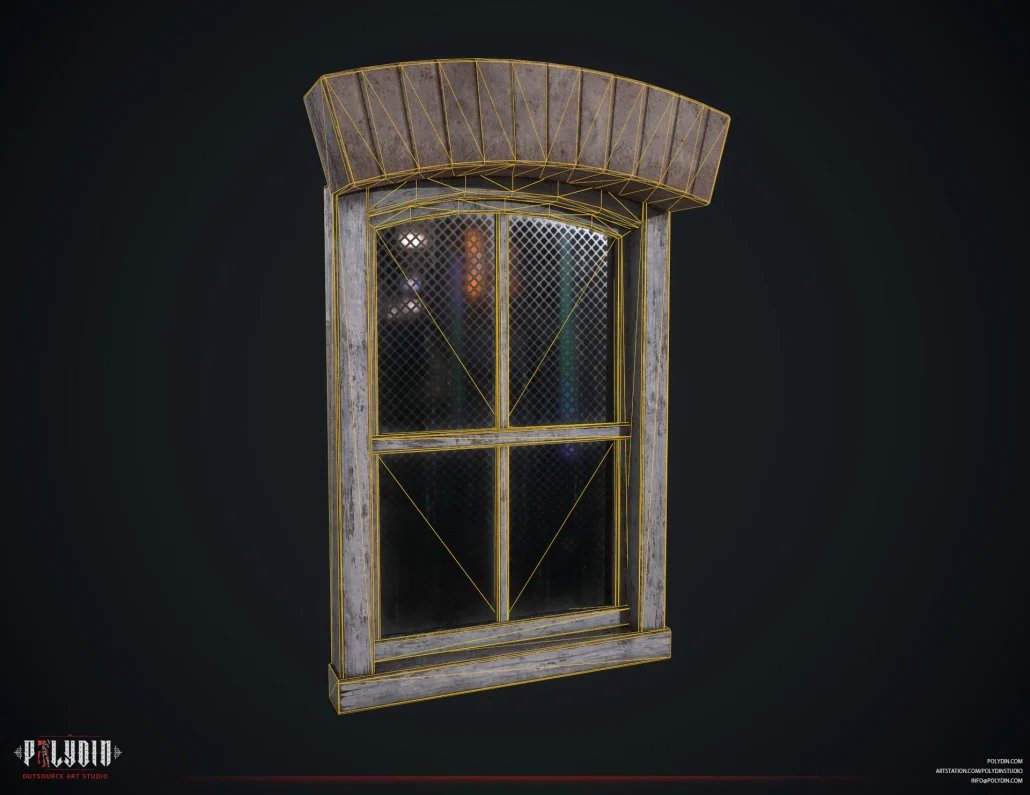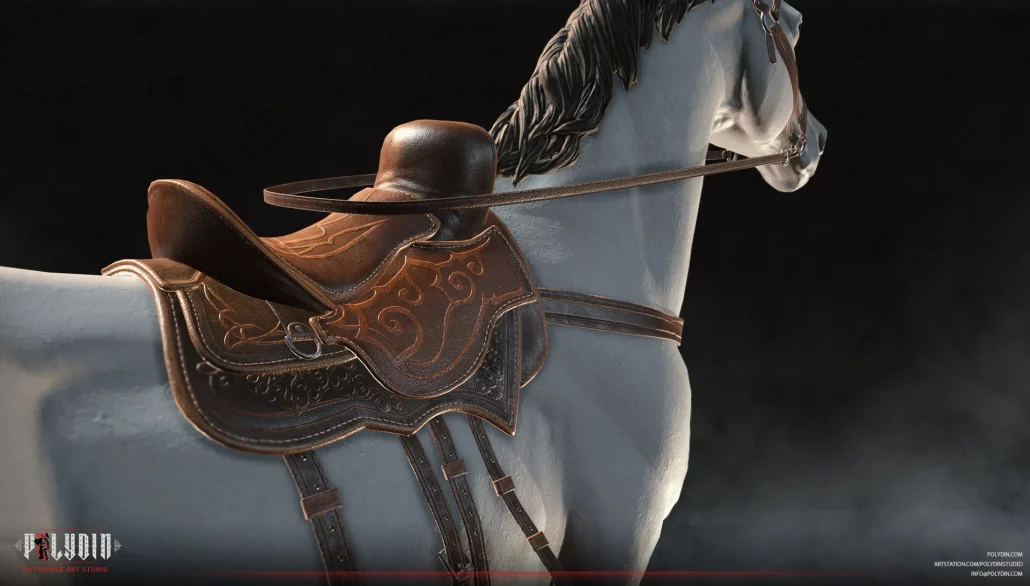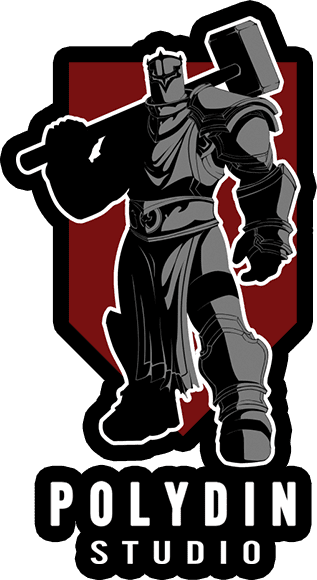In the realm of 3D graphics and game development, achieving optimal performance without compromising visual fidelity is a constant pursuit. This quest for efficiency and excellence leads us to the concept of 3D model optimization. From reducing rendering times to improving frame rates and minimizing memory usage, the optimization of 3D models plays a pivotal role in ensuring smooth and immersive experiences for users across various platforms and applications.
In this guide Polyding Game Art Studio, we delve into the intricacies of 3D model optimization, exploring its importance, techniques, challenges, and common misconceptions, while also shedding light on its diverse applications and benefits in the ever-evolving landscape of digital content creation.
What Is 3D Optimization?
3D optimization refers to the process of enhancing the performance and efficiency of three-dimensional (3D) models used in computer graphics, simulations, games, and other applications. It involves various techniques aimed at reducing the computational resources required to render and display 3D content without compromising visual quality. Optimization efforts typically focus on aspects such as polygon count, texture resolution, rendering techniques, level of detail (LOD), and geometry simplification. The goal of 3D optimization is to achieve smoother frame rates, faster loading times, and better overall performance, ensuring a seamless and immersive user experience across different platforms and devices.
Why 3D Model Optimization Matters?
3D model optimization is crucial for several reasons:
- Improved Performance: Optimized 3D models require fewer computational resources to render, resulting in smoother frame rates and faster loading times. This is particularly important in real-time applications like games and simulations, where performance directly impacts user experience.
- Enhanced Compatibility: Optimized models are more likely to run smoothly on a variety of hardware configurations and platforms, including mobile devices, consoles, and PCs. This broadens the reach of applications and ensures accessibility to a wider audience.
- Reduced Storage and Bandwidth Requirements: By minimizing the size of 3D assets through optimization techniques such as compression and LOD generation, developers can decrease storage space and bandwidth usage, making downloads and streaming more efficient.
- Cost Savings: Optimized models consume fewer resources during development, playtesting, and deployment, leading to cost savings in terms of time, manpower, and infrastructure.
- Extended Lifespan: As technology evolves and hardware capabilities improve, optimized 3D models are more likely to remain relevant and performant over time. This reduces the need for frequent updates or redesigns to keep up with advancing technology.
Overall, 3D model optimization is essential for delivering high-quality, immersive experiences while maximizing performance, efficiency, and cost-effectiveness across various applications and platforms.


How Does 3D Model Optimization Work?
3D model optimization is a process aimed at enhancing the performance and efficiency of 3D assets used in various applications, including games, simulations, and visualizations. It involves refining the geometry, textures, and animations of 3D models to strike a balance between visual quality and computational resources. The optimization process typically begins by analyzing the complexity of the 3D model and identifying areas where improvements can be made.
Techniques such as polygon reduction, level of detail (LOD) management, texture optimization, and mesh simplification are commonly employed to reduce the computational overhead associated with rendering the model. Additionally, optimization may involve tweaking shaders, implementing efficient culling techniques, and compressing animation data to further enhance performance. Overall, 3D model optimization is essential for ensuring smooth real-time rendering, minimizing memory usage, and maximizing the overall efficiency of 3D applications.
Techniques For 3D Model Optimization
Several techniques are employed for 3D model optimization to enhance performance and efficiency without compromising visual quality. Here are some common methods:
- Polygon Reduction: Polygon reduction involves simplifying the geometry of a 3D model by reducing the number of polygons while preserving its overall shape and appearance. This is typically achieved through algorithms that remove unnecessary detail or collapse vertices based on various criteria such as curvature or visibility.
- Level of Detail (LOD): LOD systems involve creating multiple versions of a 3D model with varying levels of detail. As the distance between the camera and the object changes, the system dynamically switches between these LODs to maintain performance. This ensures that objects appear detailed when viewed up close and less detailed when viewed from a distance.
- Texture Optimization: Optimizing textures involves reducing their resolution, compressing them using efficient algorithms, or using texture atlases to combine multiple textures into a single image. This reduces memory usage and improves rendering performance by minimizing the amount of texture data that needs to be processed.
- Mesh Decimation: Mesh decimation algorithms selectively remove vertices and faces from a 3D model while preserving its overall shape and silhouette. This reduces the complexity of the geometry, resulting in faster rendering and improved performance, especially for models with excessive detail.
- Culling Techniques: Culling involves selectively rendering only the portions of the scene that are visible to the camera. Techniques such as frustum culling, occlusion culling, and backface culling help reduce the workload on the graphics pipeline by avoiding the rendering of objects that are not visible.
- Animation Compression: For animated 3D models, animation data can be compressed using techniques like keyframe reduction, curve fitting, and skeletal compression. This reduces memory usage and bandwidth requirements while maintaining animation quality and performance.
- Optimized Shaders: Shaders can be optimized to minimize computational overhead and improve rendering performance. This includes simplifying complex shader logic, reducing the number of shader passes, and optimizing rendering techniques for specific hardware configurations.
By employing these techniques, developers can optimize 3D models to achieve better performance, faster rendering times, and improved efficiency in various interactive applications, including games, simulations, and virtual environments.
Challenges In 3D Model Optimization
Optimizing 3D models comes with its set of challenges, primarily revolving around striking the delicate balance between visual fidelity and performance efficiency. One significant challenge is maintaining the visual quality of the model while reducing its complexity.
This involves careful consideration of which details are essential for the intended purpose of the model and which can be safely simplified or removed without significantly impacting its appearance. Another challenge lies in managing the trade-off between file size and rendering speed.
Optimized models should be lightweight to minimize loading times and memory usage, but this must be balanced against the need to preserve important details and textures. Furthermore, ensuring compatibility across different platforms and devices adds complexity, as optimization strategies may need to vary depending on the target hardware specifications.
Lastly, achieving optimization without compromising the artistic integrity of the original design poses a creative challenge, requiring collaboration between artists and technical experts to find solutions that meet both aesthetic and performance requirements.
Benefits Of Optimizing 3D Models
Optimizing 3D models offers several benefits that enhance the overall efficiency and performance of a project. Firstly, optimized models contribute to improved rendering performance, resulting in smoother frame rates and reduced loading times, which enhances the user experience, particularly in real-time applications like games and interactive simulations. Additionally, optimized models consume fewer system resources, such as memory and processing power, making them more suitable for resource-constrained environments like mobile devices or web applications.
Furthermore, optimized models can facilitate faster data transmission and storage, reducing bandwidth requirements and enabling quicker downloads and streaming. From a production standpoint, optimizing 3D models can streamline workflows, as lighter and more efficient assets are easier to manage, modify, and distribute among team members. Overall, optimizing 3D models maximizes performance, minimizes resource consumption, and streamlines production processes, ultimately contributing to a more efficient and cost-effective project development cycle.
Common Myths About 3D Model Optimization
Despite its importance, 3D model optimization is sometimes misunderstood, leading to common myths surrounding the practice. Here are some of these common myths:
- Sacrifices Quality: Some believe that optimizing 3D models inherently sacrifices visual quality for performance.
- Only for Complex Projects: There’s a misconception that optimization is only necessary for large-scale or complex projects.
- One-Time Task: Some think that optimization is a one-time task completed during the initial stages of development.
- Sole Responsibility of Artists: It’s commonly misunderstood that optimization is solely the responsibility of 3D artists or technical specialists.
Addressing these myths promotes a better understanding of 3D model optimization and its significance in project development.


Where Is 3D Model Optimization Used?
3D model optimization is used in various industries and applications where efficiency, performance, and visual quality are crucial. Here are some common areas where 3D model optimization is applied:
- Video Games: Optimization is essential in game development to ensure smooth gameplay, faster loading times, and efficient resource utilization.
- Virtual Reality (VR) and Augmented Reality (AR): In VR and AR applications, optimized 3D models help maintain a high frame rate and reduce latency, enhancing the immersive experience.
- Architectural Visualization: Architects and designers use optimized 3D models to create realistic renderings and walkthroughs of buildings and interior spaces.
- Product Design and Manufacturing: Optimization is vital in product design to streamline manufacturing processes, reduce material costs, and enhance product performance.
- Animation and Visual Effects (VFX): In the entertainment industry, optimized 3D models are used in animated films, TV shows, and special effects to achieve realistic and visually stunning results.
- Simulation and Training: Optimization plays a crucial role in simulation software used for training purposes, such as flight simulators, medical simulations, and military training exercises.
- Interactive Media and Marketing: Optimized 3D models are employed in interactive applications, advertising, and marketing campaigns to create engaging and immersive experiences for users.
- Web and Mobile Applications: With the increasing demand for 3D content on the web and mobile devices, optimization ensures smooth performance and fast loading times for online experiences.
Overall, 3D model optimization is a fundamental aspect of many industries where high-quality visuals, interactivity, and performance are essential.
Conclusion
In conclusion, 3D model optimization is a critical process that impacts various industries, including gaming, architecture, entertainment, and manufacturing. By optimizing 3D models, developers and designers can achieve smoother performance, faster loading times, reduced resource consumption, and improved visual quality.
While there are challenges and misconceptions surrounding optimization, its benefits are significant, leading to enhanced user experiences, increased efficiency, and cost savings. As technology continues to advance, the importance of 3D model optimization will only grow, driving innovation and improvement across diverse fields and applications.


